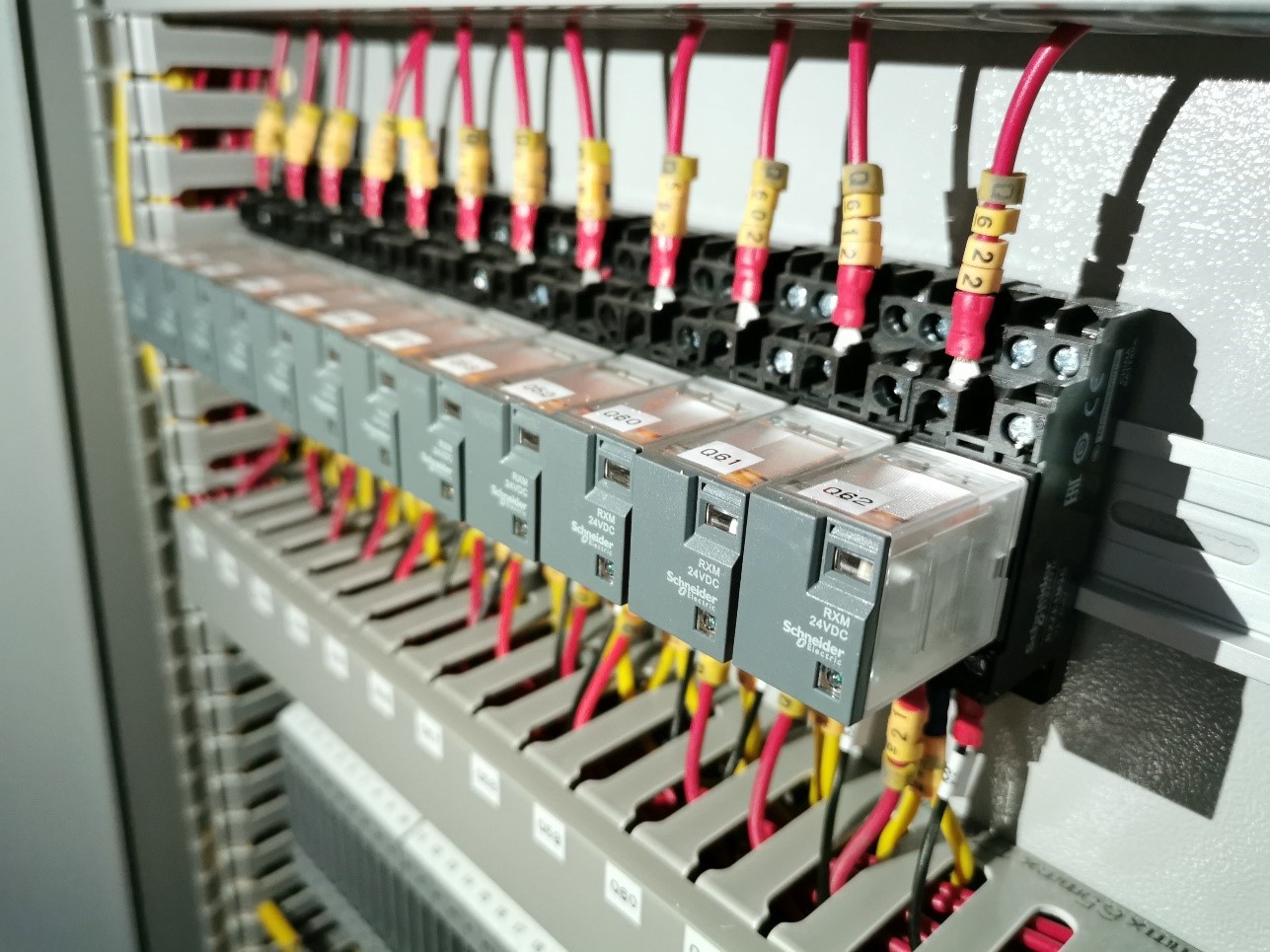There’s no question that your building’s electrical system has lots of components. When any one of them malfunctions, you could experience anything from a temporary power outage to a complete blackout, putting your business at risk of delays and unexpected expenses. If you’re able to identify electrical issues early, you can work with an expert to get your business back on track. Here, we’ll talk about how to test one of the most vital elements of your electrical system, the electrical relay.
What is an Electrical Relay?
There are many types of relays in use today that range from circuit protection to automating controls. This discussion will involve the latter. An electrical relay is simply a switch that helps control devices. The relay uses an electrical current to energize an electro-magnetic coil to move a pole into a select position to operate contacts. If this current is removed, the magnetic field becomes de-energized, and the pole will move to its de-energized position.
In a typical electrical relay, there will be two states of contacts: Normally Open (NO) and Normally Closed (NC). “Normally” refers to the state the contacts are in when the coil is de-energized. When the coil is energized, NC contacts will open and NO contacts will close. The final position is known as COM, or Common. The COM terminal refers to the return path for the circuit, as it is the common point for NC and NO contacts.
What are Relays Used For?
Now that we know the basics of how a relay works, we can understand its practical applications.
A relay essentially serves as a controller for your electrical circuit. Typically, for small devices, the whole of your power circuit is simply too much. Putting all available power into your small devices can result in a blowout, which could be dangerous and costly. Having a relay allows your power circuit to be protected from the higher power levels in your system.
Consider your car’s headlights. When your headlights are off, the electrical relay contacts are in the open position. When you are ready to turn the headlights on, you may twist the handle. This energizes the electric relay coil to close the contacts and your headlights come on.
The computer inside your car can’t directly control the headlights, since the computer has a relatively low power level compared to the rest of the car. If you were to power your headlights directly from the car’s computer, there would be too much electricity transferred, causing the computer to burn out.
Using a Multimeter
By testing your electrical relay, you can ensure it’s working properly and can effectively power your devices, saving you from potential burnouts and costly equipment repairs or replacements. Since your electrical relay is such a vital element in your system, you should always consult a professional electrical engineer to test your relays. Whenever you begin to deal with a relay, ensure that your power source is disconnected to avoid injury.
One of the most common tools used to test electrical relays is called a multimeter. This method is preferred by many electrical engineers, thanks in large part to its relative ease. Once the relay is removed from the circuit, your electrical engineer will put the multimeter into Resistance Measurement mode. Then connect the multimeter to the relay’s coil terminals. A reading between 40 and 120 Ohms indicates a normal coil. Anything outside of this range indicates a faulty relay, which will need replacing.
A multimeter also can be used to test the continuity amongst the relay’s three high-power contacts. Once the relay is de-energized, the COM terminal should connect to the NC terminal. Once energized, the COM terminal should move to the NO terminal. Your electrical engineer can use their multimeter to test these connections; if any of the tests fail, you may have a faulty relay.
Testing a Relay Without a Multimeter
Using a multimeter isn’t the only way that electrical engineers can test your relay.
First, a relay can be tested by examining the DC power supply. Your electrical engineer will attach the coils to a power supply, typically a 12V battery or a battery with a switch. Once the switch is closed, the coil will be activated, transferring the state of the contacts. When the switch is opened, the contacts will return to their normal position.
Alternatively, electrical engineers can use a small circuit to test your relay. Your electrical engineer can use simple components to create a basic circuit, then attach your relay to said circuit. Once power is supplied, the coil should be activated, and the pole should change positions.
Working with MTA
Electrical relays are essential to keeping your business running, helping to protect small devices and keep larger elements running smoothly. If you notice an issue with your electrical device, such as a bad smell or the refusal to start, your relay may be to blame. In this case, it’s best to consult an expert to come and examine the issue.
MTA Electrical Engineers is proud to serve clients throughout California and the West Coast, including Los Angeles and San Diego counties. We have worked with businesses large and small to ensure the safety of their electrical systems, and monitoring and repairing electrical relays is one small part of our professional services.
Other services offered by MTA include arc flash analyses, coordination studies, electrical drawings, electrical testing, and power system analyses. Whether you’re moving into a new building, noticing problems with your equipment, or simply need the peace of mind that your electrical system is up to code, the MTA team can help. Our team has combined decades of experience in the electrical field and can help ensure that your power supply is both safe and effective.
Reach out to MTA today for more information or to schedule an appointment.

